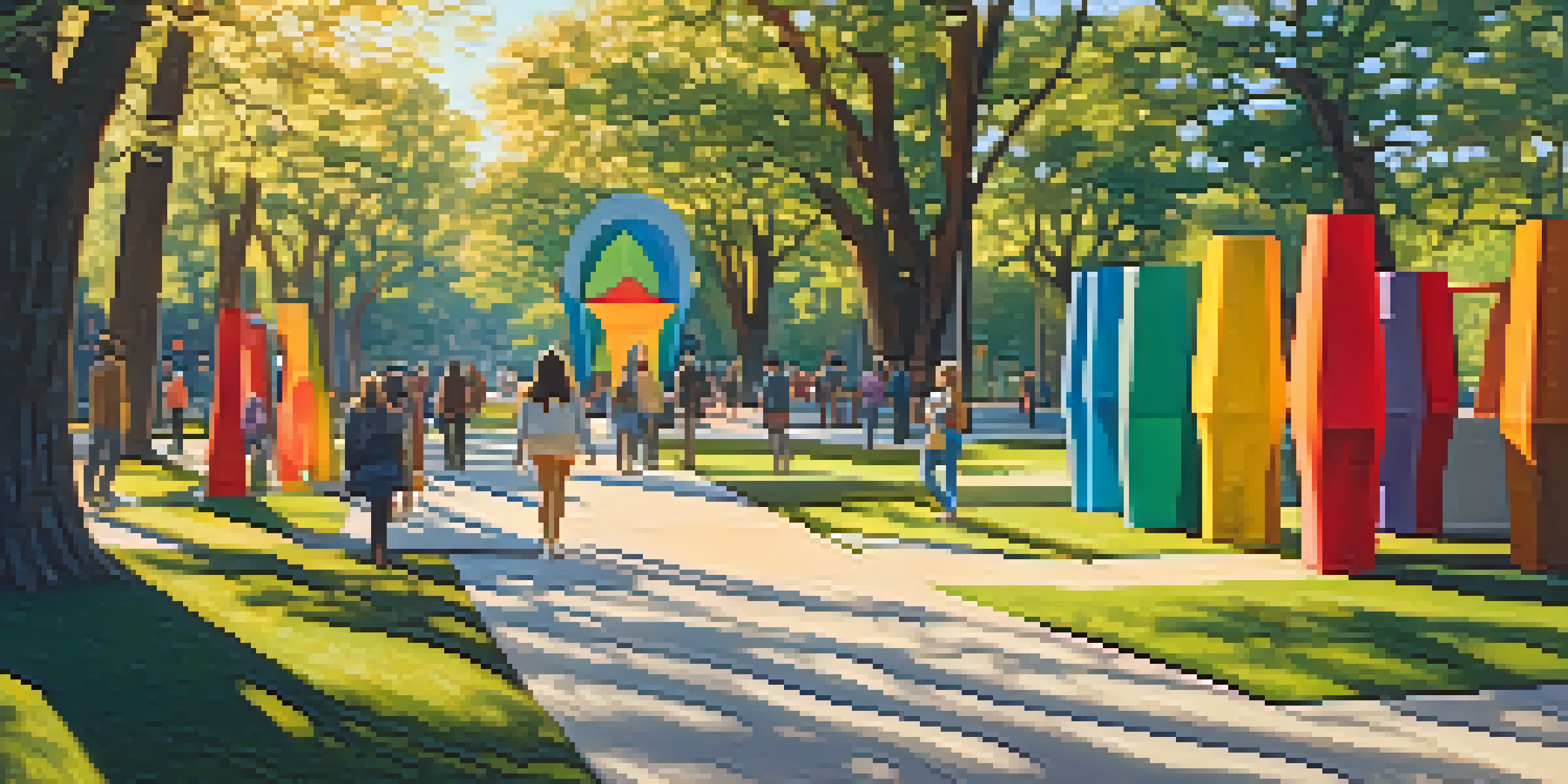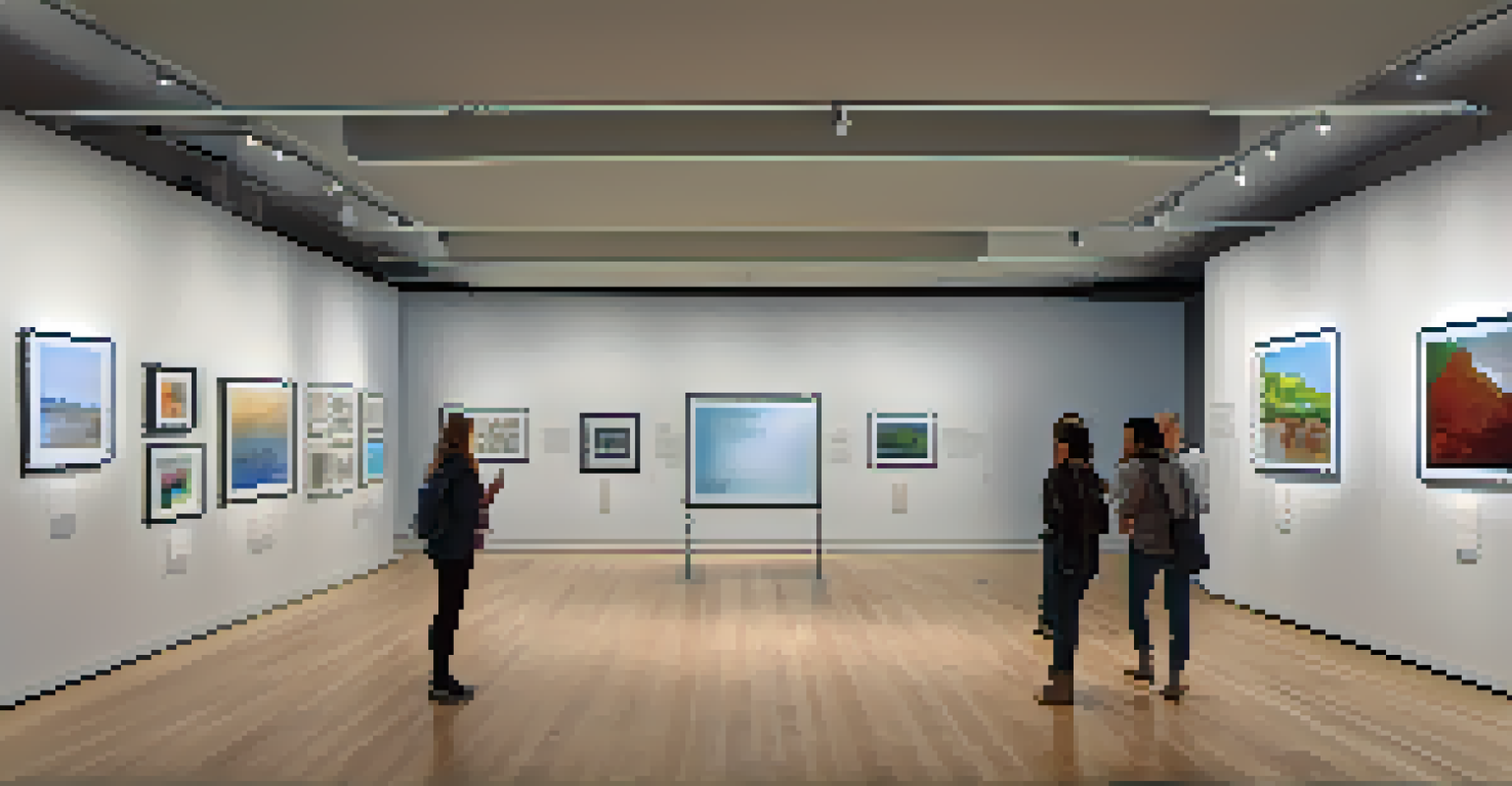Barriers to Access: Identifying Challenges in Art Spaces

Understanding Access Barriers in Art Spaces
Access barriers in art spaces can take many forms, often preventing individuals from fully engaging with art. These challenges can be physical, financial, or even social, impacting how diverse audiences experience art. Understanding these barriers is essential for creating inclusive art environments that welcome everyone.
Art is not freedom from discipline, but disciplined freedom.
For instance, consider a local gallery that is not wheelchair accessible. While the art on display may be captivating, individuals with mobility challenges may feel excluded from the experience. This scenario highlights the importance of recognizing and addressing physical barriers in art venues.
Moreover, financial constraints can deter individuals from attending art events, especially when ticket prices are steep. When art becomes a luxury rather than a shared experience, it limits the richness of cultural exchange and community involvement.
The Role of Physical Barriers in Accessibility
Physical barriers are among the most visible challenges in art spaces. These can include stairs, narrow doorways, or inadequate seating arrangements that make it difficult for everyone to enjoy the art. Addressing these issues requires thoughtful design and a commitment to inclusivity from gallery owners and curators.

For example, an art installation set up in a park can offer a beautiful outdoor experience, but if paths are not paved or accessible, many may miss out on the opportunity. Ensuring all individuals can navigate spaces easily is critical to fostering a welcoming atmosphere.
Physical Barriers Hinder Access
Physical obstacles like stairs and narrow doorways in art spaces prevent individuals from fully enjoying the experience.
Incorporating ramps, elevators, and clear signage can go a long way in making art spaces more accessible. By prioritizing these physical changes, art venues can open their doors to a wider audience, enriching the community's cultural landscape.
Financial Barriers Limiting Art Engagement
Financial barriers often prevent individuals from engaging with the arts, whether through the cost of admission or the price of art supplies for workshops. This can create a divide between those who can afford to participate and those who cannot, limiting the diversity of voices in the art world.
The purpose of art is not a rarified, intellectual distillate; it is life, intensified, brilliant life.
Consider a community art class that charges a fee. While it may be affordable for some, many potential artists might feel excluded due to financial constraints. Offering sliding scale fees or free community events can help bridge this gap and foster more inclusive participation.
Additionally, funding initiatives that support underrepresented artists can create opportunities for those who face financial challenges. This not only enriches the artistic community but also ensures diverse perspectives are represented in artwork.
Social and Cultural Barriers in Art Spaces
Social barriers can significantly impact who feels welcome in art spaces. This might include a lack of representation or cultural insensitivity that makes certain groups feel unwelcome. Understanding these dynamics is essential for fostering an inclusive environment.
For instance, if an art exhibit primarily showcases the work of one demographic, others may feel alienated or disconnected from the experience. Curators have the responsibility to present a range of perspectives and experiences to resonate with a broader audience.
Financial Constraints Limit Participation
High admission fees and costs for art supplies create a divide, excluding those who cannot afford to engage with the arts.
Moreover, creating a dialogue around inclusivity can help break down these social barriers. Engaging with communities and understanding their needs can lead to more representative and welcoming art spaces.
The Importance of Community Engagement
Community engagement plays a crucial role in dismantling access barriers in art spaces. When local communities are actively involved in the decision-making process, art spaces can better cater to diverse needs. This engagement fosters a sense of ownership and belonging among community members.
For example, hosting community forums to gather input on exhibitions can empower residents to share their experiences and suggestions. This not only ensures that art reflects the community's voice but also creates a stronger bond between artists and their audiences.
Furthermore, partnerships with local organizations can enhance outreach efforts, bringing art to those who may not typically have access. These collaborative efforts demonstrate a commitment to inclusivity and can transform how art is experienced in the community.
Technology's Role in Enhancing Accessibility
Technology can be a powerful tool in overcoming access barriers in art spaces. From virtual tours to interactive apps, digital resources can enhance the art experience for individuals who may face challenges. These innovations create new opportunities for engagement beyond the physical space.
For instance, virtual reality can allow people to explore galleries from the comfort of their homes, breaking down geographical and physical barriers. This approach opens doors for those who may not be able to visit in person due to mobility issues or distance.
Social Barriers Affect Inclusivity
A lack of representation and cultural sensitivity in art spaces can alienate certain groups, making it crucial to foster diverse perspectives.
Moreover, making digital content accessible, such as providing audio descriptions or captions, ensures that everyone can appreciate and engage with art. By leveraging technology, art spaces can create a more inclusive landscape for all audiences.
Advocating for Change in Art Spaces
Advocating for change in art spaces is essential for addressing access barriers. Artists, curators, and community members can work together to push for policies and practices that promote inclusivity. This collective effort can lead to meaningful transformations in how art is experienced.
For instance, advocating for funding that supports accessibility initiatives can lead to better infrastructure in galleries. When communities come together to voice their needs, they have the power to influence how art spaces operate and evolve.

Furthermore, raising awareness about the importance of inclusivity in art can inspire others to join the cause. By sharing stories and experiences, advocates can highlight the need for change and encourage art spaces to prioritize accessibility for everyone.